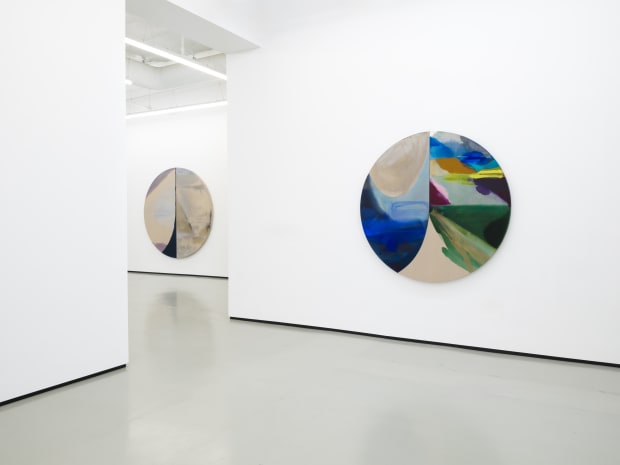-
In Conversation with Pamela Jorden
June 7, 2024 -

Photo by Jeff McLane, courtesy of the artist and Philip Martin Gallery.
-
 Pamela Jorden, Stone (Primary), 2024, Acrylic and oil on linen, 2-part, 18 x 13 1/8 in; 45.7 x 33.3 cm
Pamela Jorden, Stone (Primary), 2024, Acrylic and oil on linen, 2-part, 18 x 13 1/8 in; 45.7 x 33.3 cm -

Photo by Jeff McLane, courtesy of the artist and Philip Martin Gallery.
-
 Pamela Jorden, Birdsong, 2024, Acrylic and oil on linen, 2-part, 80 x 48 in; 203.2 x 121.9 cm
Pamela Jorden, Birdsong, 2024, Acrylic and oil on linen, 2-part, 80 x 48 in; 203.2 x 121.9 cm -
 Pamela Jorden, Waterfall, 2024, Acrylic and oil on linen, 2-part, 80 in diameter; 203.2 cm diameter
Pamela Jorden, Waterfall, 2024, Acrylic and oil on linen, 2-part, 80 in diameter; 203.2 cm diameter -
 Pamela Jorden, Delta, 2024, Acrylic and oil on linen, 13 7/8 x 16 in; 35.2 x 40.6 cm
Pamela Jorden, Delta, 2024, Acrylic and oil on linen, 13 7/8 x 16 in; 35.2 x 40.6 cm -
 Pamela Jorden, Green Ray, 2024, Acrylic and oil on linen, 2-part, 60 in diameter; 152.4 cm diameter
Pamela Jorden, Green Ray, 2024, Acrylic and oil on linen, 2-part, 60 in diameter; 152.4 cm diameter -
 Pamela Jorden, Vertical Field, 2024, Acrylic and oil on linen, 2-part, 80 x 17 in; 203.2 x 43.2 cm
Pamela Jorden, Vertical Field, 2024, Acrylic and oil on linen, 2-part, 80 x 17 in; 203.2 x 43.2 cm
Pamela Jorden: Light Falls
Past viewing_room







